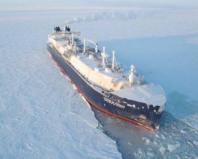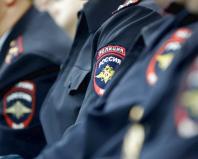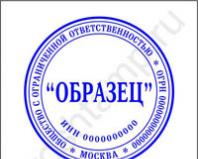Presentation on Thomas Jefferson English. Presentation on Thomas Jefferson
Presentation on the topic: Thomas Jefferson
Presentation on the topic: Thomas Jefferson
Slide no. 1
Slide description:
Slide no. 2

Slide description:
Thomas Jefferson Thomas Jefferson was the author of the Declaration of Independence, a principal leader in the American Revolution, and the third president of the United States. Jefferson is also regarded as a great political thinker and diplomat. The U.S. doubled its area in 1803 when he bought territory west of the Mississippi called the Louisiana Purchase.
Slide no. 3

Slide description:
Declaration of IndependenceThe Declaration of Independence, drafted principally by Thomas Jefferson, is the document in which American colonists proclaimed their freedom from British rule.
Slide no. 4

Slide description:
In 1803 United States President Thomas Jefferson paid Napoleon Bonaparte of France $15 million for about 2.1 million sq km (about 800,000 sq mi) of land west of the Mississippi River. Shown here amid the present-day U.S. boundaries, the Louisiana Purchase provided growing room for the young nation.Louisiana Purchase
Slide no. 5

Slide description:
Thomas Jefferson’s Residence Thomas Jefferson designed his mansion, Monticello, in 1770 and completed it in 1809. The Albemarle, Virginia, estate has 35 rooms and includes Greek and Roman architectural details. Jefferson is buried in a family plot on the property.
Slide no. 6

Slide description:
Jefferson died on July 4, 1826, the 50th anniversary of the signing of the Declaration of Independence. Jefferson was an accomplished farmer, lawyer, architect, inventor, naturalist, philosopher, and scientist. The present collection of the Library of Congress began with the purchase of Jefferson's personal library.Library of CongressThomas Jefferson Memorial
Slide 1
Slide 2
 April 13, 1743 - July 4, 1826. 1. prominent figure in the American Revolutionary War. 2. author of the Declaration of Independence 1776. 3. 3rd President of the United States in 1801-1809. 4. one of the founding fathers of the USA. 5. outstanding political figure 6. diplomat and philosopher of the Enlightenment.
April 13, 1743 - July 4, 1826. 1. prominent figure in the American Revolutionary War. 2. author of the Declaration of Independence 1776. 3. 3rd President of the United States in 1801-1809. 4. one of the founding fathers of the USA. 5. outstanding political figure 6. diplomat and philosopher of the Enlightenment.
Slide 3
 7. Head of the committee to create the Declaration of Independence. 8. Governor of Virginia (1779-1781) 9. An outstanding scientist in various fields of knowledge. 10. Known as one of the main creators of the doctrine of separation of church and state.
7. Head of the committee to create the Declaration of Independence. 8. Governor of Virginia (1779-1781) 9. An outstanding scientist in various fields of knowledge. 10. Known as one of the main creators of the doctrine of separation of church and state.
Slide 4
 Thomas Jefferson came from a family of wealthy Virginia landowners. In 1752, Jefferson began studying at a local elementary school with a Scottish priest and began studying Latin, ancient Greek and French. He received a classical education, then went to college and graduated with top marks. Jefferson studied very conscientiously, sometimes, according to eyewitnesses, studying for fifteen hours a day, and was keenly interested in all subjects.
Thomas Jefferson came from a family of wealthy Virginia landowners. In 1752, Jefferson began studying at a local elementary school with a Scottish priest and began studying Latin, ancient Greek and French. He received a classical education, then went to college and graduated with top marks. Jefferson studied very conscientiously, sometimes, according to eyewitnesses, studying for fifteen hours a day, and was keenly interested in all subjects.
Slide 5
 As president, Jefferson called for national unity and party consensus for the good of the country. Jefferson's phrase “we are all Republicans, we are all Federalists” has become a textbook, and its author is one of the founders of the two-party system. The course of the Jefferson administration was distinguished by pragmatism and a penchant for compromise. The army and navy were reduced, the administrative apparatus was reduced, and the public debt was reduced. The objective path of development of the United States prompted Jefferson to abandon his favorite idea of creating a “republic of small landowners” and declare that “agriculture, manufactures, trade and shipping are the four pillars of our prosperity.” He moves away from the principle of state non-interference in the economy, and the ideas of free trade that he previously defended give way to protectionism.
As president, Jefferson called for national unity and party consensus for the good of the country. Jefferson's phrase “we are all Republicans, we are all Federalists” has become a textbook, and its author is one of the founders of the two-party system. The course of the Jefferson administration was distinguished by pragmatism and a penchant for compromise. The army and navy were reduced, the administrative apparatus was reduced, and the public debt was reduced. The objective path of development of the United States prompted Jefferson to abandon his favorite idea of creating a “republic of small landowners” and declare that “agriculture, manufactures, trade and shipping are the four pillars of our prosperity.” He moves away from the principle of state non-interference in the economy, and the ideas of free trade that he previously defended give way to protectionism.
Slide 6
 Jefferson's presidency, in the White House from March 4, 1801 to March 4, 1809, was marked by the $15 million purchase of Louisiana from France in 1803, nearly doubling the territory of the United States; organizing the Lewis and Clark expedition, which in 1804-06 reached the Pacific coast and returned to St. Louis, having traveled more than 8 thousand miles; the establishment of diplomatic relations with Russia in 1808-09. The elections of 1804 brought new success to Jefferson and his party. However, the second term of the presidency was overshadowed by internal and external troubles. The conspiracy threatened to split the country and cause international complications. US neutrality was shaken by the renewed Napoleonic wars. In an effort to avoid involvement in the European conflict and maintain the country's sovereignty, Jefferson signed the Embargo Act in December 1807, which provided for the cessation of all foreign trade.
Jefferson's presidency, in the White House from March 4, 1801 to March 4, 1809, was marked by the $15 million purchase of Louisiana from France in 1803, nearly doubling the territory of the United States; organizing the Lewis and Clark expedition, which in 1804-06 reached the Pacific coast and returned to St. Louis, having traveled more than 8 thousand miles; the establishment of diplomatic relations with Russia in 1808-09. The elections of 1804 brought new success to Jefferson and his party. However, the second term of the presidency was overshadowed by internal and external troubles. The conspiracy threatened to split the country and cause international complications. US neutrality was shaken by the renewed Napoleonic wars. In an effort to avoid involvement in the European conflict and maintain the country's sovereignty, Jefferson signed the Embargo Act in December 1807, which provided for the cessation of all foreign trade.
Slide 7
 This practically did not affect the interests of England and France, but caused significant damage to the American economy, caused internal unrest and weakened the position of the Republicans. All this led to the actual curtailment of socio-economic transformations.
This practically did not affect the interests of England and France, but caused significant damage to the American economy, caused internal unrest and weakened the position of the Republicans. All this led to the actual curtailment of socio-economic transformations.
Slide 8
 The last 17 years of Jefferson's life were spent at the Monticello estate, built according to his design. Here, “the sage from Monticello,” as J. Adams called him, received numerous guests and conducted extensive (over a thousand letters a month) correspondence with American and European politicians, scientists and public figures. A man of diverse interests and knowledge, Jefferson was president of the American Philosophical Society from 1797-1815. His book collection, numbering 6.5 thousand volumes and considered one of the best in America, laid the foundation for the famous Library of Congress. Jefferson's final achievement was the creation of the University of Virginia. He prepared a magnificent architectural design for the university complex, developed a charter and detailed educational plans, and formed a teaching staff.
The last 17 years of Jefferson's life were spent at the Monticello estate, built according to his design. Here, “the sage from Monticello,” as J. Adams called him, received numerous guests and conducted extensive (over a thousand letters a month) correspondence with American and European politicians, scientists and public figures. A man of diverse interests and knowledge, Jefferson was president of the American Philosophical Society from 1797-1815. His book collection, numbering 6.5 thousand volumes and considered one of the best in America, laid the foundation for the famous Library of Congress. Jefferson's final achievement was the creation of the University of Virginia. He prepared a magnificent architectural design for the university complex, developed a charter and detailed educational plans, and formed a teaching staff.


Jefferson was born in Virginia into a plantation family, the third of eight children. In 1752, Jefferson entered a local school, where he began to study ancient Greek, Latin and French. After his father's death in 1757, Thomas inherited 5,000 acres of land and dozens of slaves, and it was on this land that the famous Monticello estate was later built. From 1758 to 1760, he studied at James Morey's school. Since the school was 12 miles from the Jefferson estate, he lived in the family of a priest (Maury). Having received a classical education, he entered the philosophy department of the College of William and Mary in Williamsburg. Jefferson was a conscientious student, he diligently studied French, never left his book on the grammar of the ancient Greek language, and learned to play the violin.


Having become acquainted with the works of Isaac Newton, John Locke and Francis Bacon, he later called them “the three greatest men who have ever existed in history.” Thomas graduated with honors in 1762 and was licensed to practice law in 1767. In 1772, at the age of 37, Jefferson married widow Martha Wayles Skelton, with whom he later had six children, four of whom died at an early age. 10 years later, Jefferson’s wife also died. Martha Jefferson was the only wife in the life of the third US president, although according to unofficial data, Jefferson had children from a mulatto slave. In 1769, Jefferson was elected to the Virginia House of Representatives. Jefferson's first book, A General Survey of the Rights of Man in British America, included a collection of articles on limiting colonial self-government and the tea monopoly. In these articles, Jefferson argued that the colonists had the right to self-government, and the English Parliament had powers only in the territory of Great Britain, and not in the territory of the colonies. This work brought Jefferson popularity - he was dubbed as one of the thoughtful and patriotic politicians. In 1775, Jefferson was elected to the Second Continental Congress. In 1776, Congress was considering a resolution to declare independence, as a result, a committee was created to prepare the Declaration, it included: Roger Sherman, Benjamin Franklin, John Adams, Robert R. Livingston and the head of the committee, Thomas Jefferson. Using George Mason's Virginia Declaration of Rights as a model, Jefferson wrote the first version of the American Declaration of Independence. Declarations John Adams American Declaration of Independence

Slide presentation
Slide text: Thomas Jefferson 3rd president of the United States

Slide text: Thomas Jefferson Thomas Jefferson was the author of the Declaration of Independence, a principal leader in the American Revolution, and the third president of the United States. Jefferson is also regarded as a great political thinker and diplomat. The U.S. doubled its area in 1803 when he bought territory west of the Mississippi called the Louisiana Purchase.

Slide text: Declaration of Independence The Declaration of Independence, drafted principally by Thomas Jefferson, is the document in which American colonists proclaimed their freedom from British rule.

Slide text: Louisiana Purchase In 1803 United States President Thomas Jefferson paid Napoleon Bonaparte of France $15 million for about 2.1 million sq km (about 800,000 sq mi) of land west of the Mississippi River. Shown here amid the present-day U.S. boundaries, the Louisiana Purchase provided growing room for the young nation.

Slide text: Thomas Jefferson’s Residence Thomas Jefferson designed his mansion, Monticello, in 1770 and completed it in 1809. The Albemarle, Virginia, estate has 35 rooms and includes Greek and Roman architectural details. Jefferson is buried in a family plot on the property.

Slide text: Jefferson died on July 4, 1826, the 50th anniversary of the signing of the Declaration of Independence. Jefferson was an accomplished farmer, lawyer, architect, inventor, naturalist, philosopher, and scientist. The present collection of the Library of Congress began with the purchase of Jefferson's personal library. Library of Congress Thomas Jefferson Memorial




